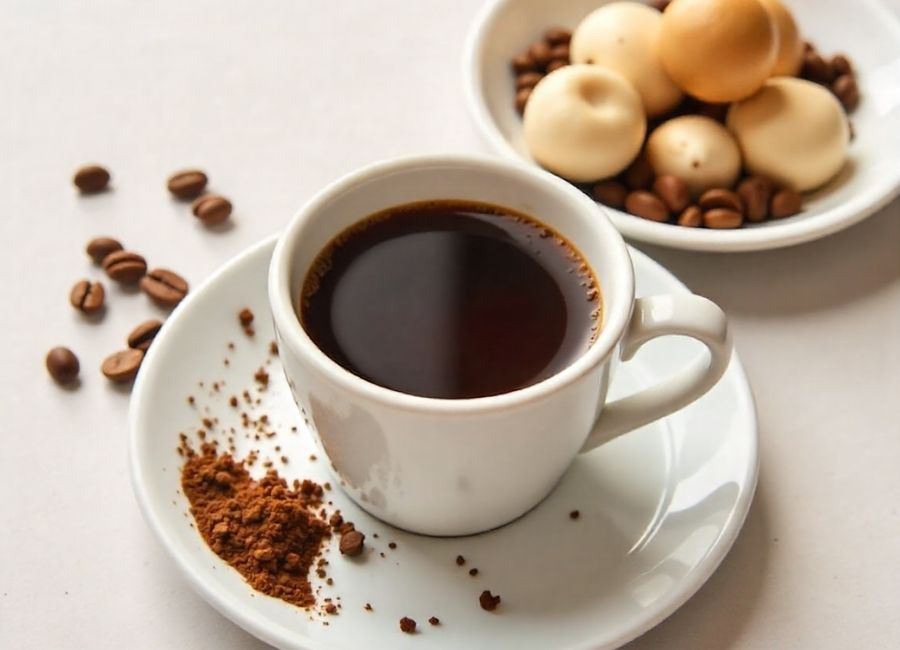Chicken breast is popular among health enthusiasts, fitness aficionados, and those simply looking for a nutritious and versatile protein source. Chicken breast is favored in countless recipes, whether baked, grilled, shredded, or sautéed. But how many calories are in a pound of chicken breast, and how does it fit into your dietary goals? If you’re wondering about the calorie count, nutritional benefits, and portioning tips, this article breaks it down.
How Many Calories Are in a Pound of Chicken Breast?
The calorie count in 1 lb (16 oz) of chicken breast can vary depending on whether it’s raw, cooked, or prepared with different ingredients. Below is a simple breakdown:
Raw Chicken Breast
Raw, skinless, and boneless chicken breast contains about 500 to 520 calories per pound. Since this form is unseasoned and unprepared, it offers a clean slate for creating your favorite dishes with minimal additives or extra calories.
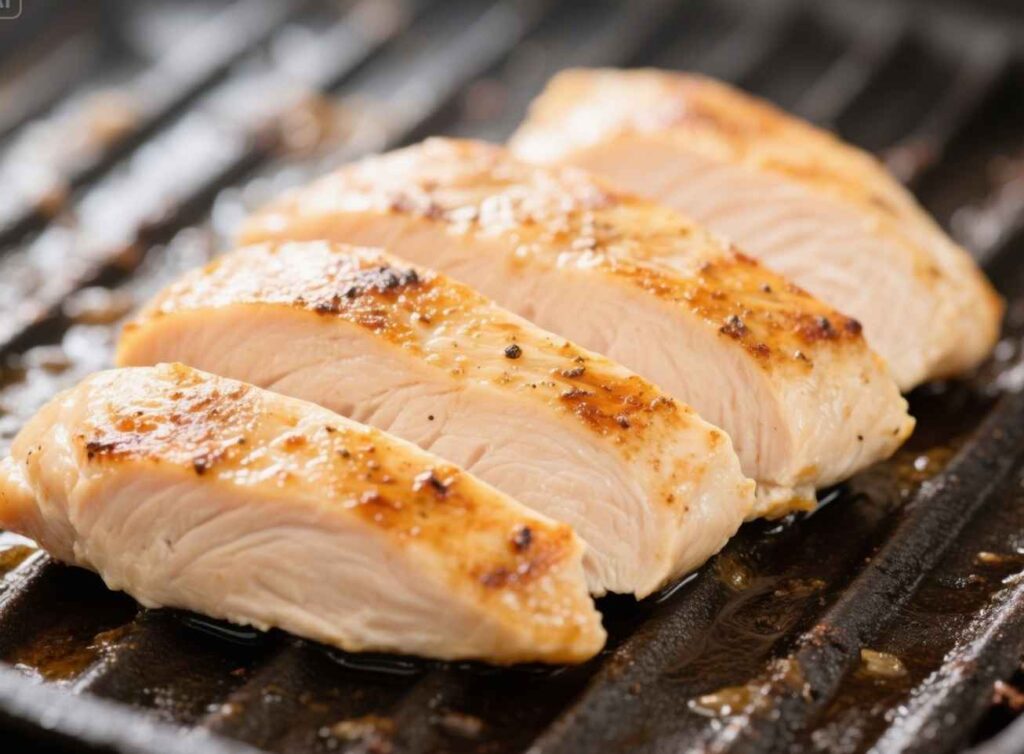
Cooked Chicken Breast
Cooking typically reduces the weight of chicken due to moisture loss. A pound of cooked, skinless, and boneless chicken breast will generally have about 700 to 750 calories, depending on the cooking method. Grilling and baking without added fats lower the calorie count than frying or sautéing with oils or butter.
Chicken Breast with Skin
If you love chicken skin’s crispy, golden goodness, remember that it adds to the calorie count. A pound of cooked chicken breast with skin can hit 900 calories or more, primarily due to the fat content in the skin.
Using these figures as a reference can help you build an informed mindset toward meal prep and calorie tracking.
Why Choose Chicken Breast as a Protein Source?
High in Protein, Low in Fat
Chicken breast is renowned for being one of the leanest protein sources you can get. A typical pound of chicken breast packs 88 to 92 grams of protein, making it ideal for muscle building, weight loss, and general health. The fat content is minimal, with only 9 to 10 grams of fat per pound for skinless varieties.

Nutrient-Dense
Aside from being a great source of protein, chicken breast also delivers essential nutrients like vitamins B6, B12, niacin, and selenium. These nutrients support energy production, immune function, and overall well-being.
Versatile and Budget-Friendly
Chicken breast is easy to incorporate into various meals, from salads and wraps to stir-fries and casseroles. Plus, it’s widely available and often more affordable than other high-protein foods like fish, steak, or plant-based alternatives.
Calorie Comparisons to Other Proteins
To better understand how chicken breast stacks up against other proteins, here’s a calorie comparison chart for 1 lb of various protein sources:
Chicken Breast (raw, skinless): 500–520 calories
Pork Tenderloin (raw): 640 calories
Salmon (raw): 710 calories
Tofu (firm): 365 calories
Beef Sirloin (raw, lean): 880 calories
Chicken breast is one of the most calorie-efficient options for high protein intake, especially when you choose the skinless variety.
Factors That Affect the Calorie Content
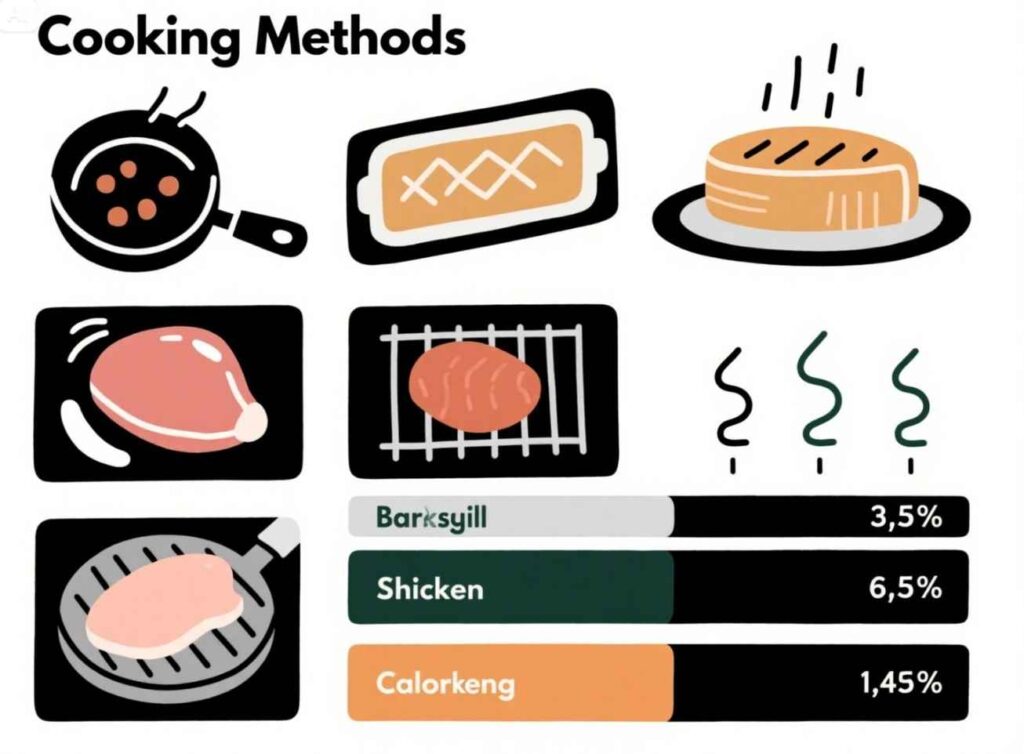
Cooking Methods
Your cooking method plays a massive role in the calorie count. Here’s how various methods compare for a pound of chicken breast (values are approximate):
Grilled: 700 calories
Baked: 720 calories
Fried: 850 calories
Boiled/Poached: 660 calories
Sautéed with olive oil: 780 calories
Frying generally adds the most calories due to the absorption of cooking oils, while boiling or grilling keeps calories lower.
Seasonings and Sauces
Spices, rubs, and sauces can quickly add extra calories. For instance:
Two tablespoons of barbecue sauce add 70 calories.
Cooking with one tablespoon of butter adds 100 calories.
Depending on the ingredients, a creamy marinade can tack on anywhere from 50 to 200 calories.
For a healthier approach, stick to herbs, lemon juice, and low-calorie seasonings to enhance the chicken’s natural flavors.
Portion Sizes
A full pound of chicken breast might not be practical for one serving unless you’re a bodybuilder! Proper portion control ensures you’re not overeating. A typical serving size is 4 oz (¼ lb) of cooked chicken, which contains about 170–180 calories.
Making Chicken Breast Part of Your Diet
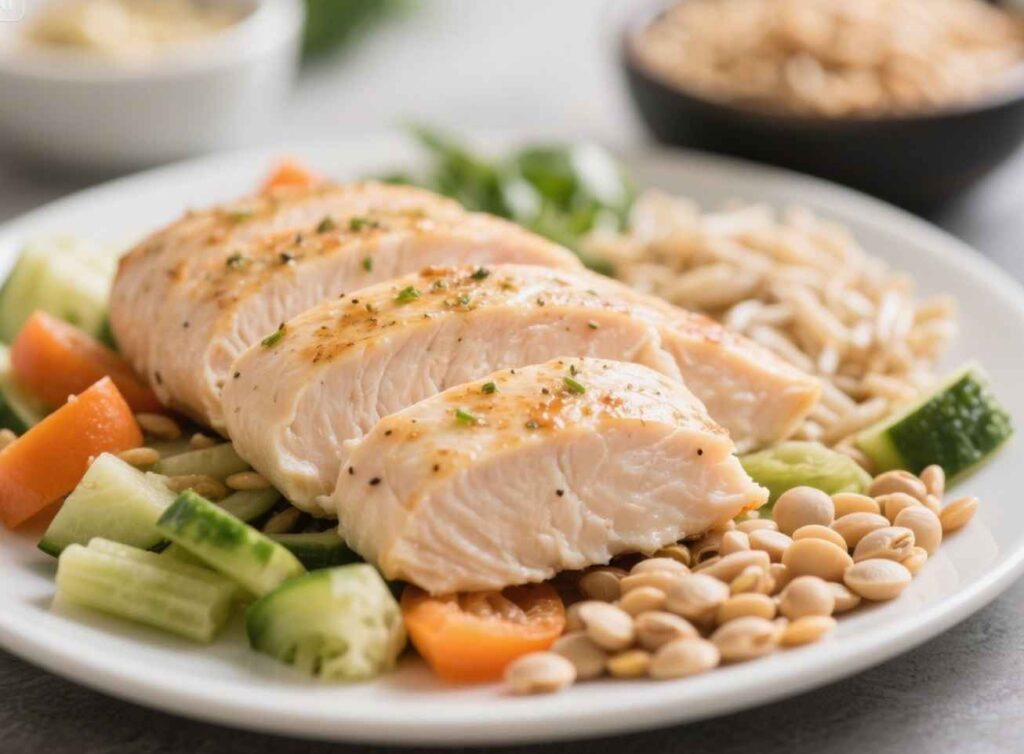
For Weight Loss
Chicken breast is a favorite for weight loss diets due to its high protein content and low calories. Please include it in balanced meals alongside vegetables, whole grains, or legumes to stay full and satisfied without overeating.
For Muscle Building
The protein-rich nature of chicken breast makes it perfect for athletes and weightlifters. Pair it with complex carbohydrates, like sweet potatoes or quinoa, and healthy fats, like avocado, to fuel your post-workout recovery.
For General Health
Even if your goal isn’t weight loss or muscle gain, chicken breast supports a balanced diet and provides essential nutrients your body needs to thrive.
Quick Tips to Keep Chicken Breast Healthy
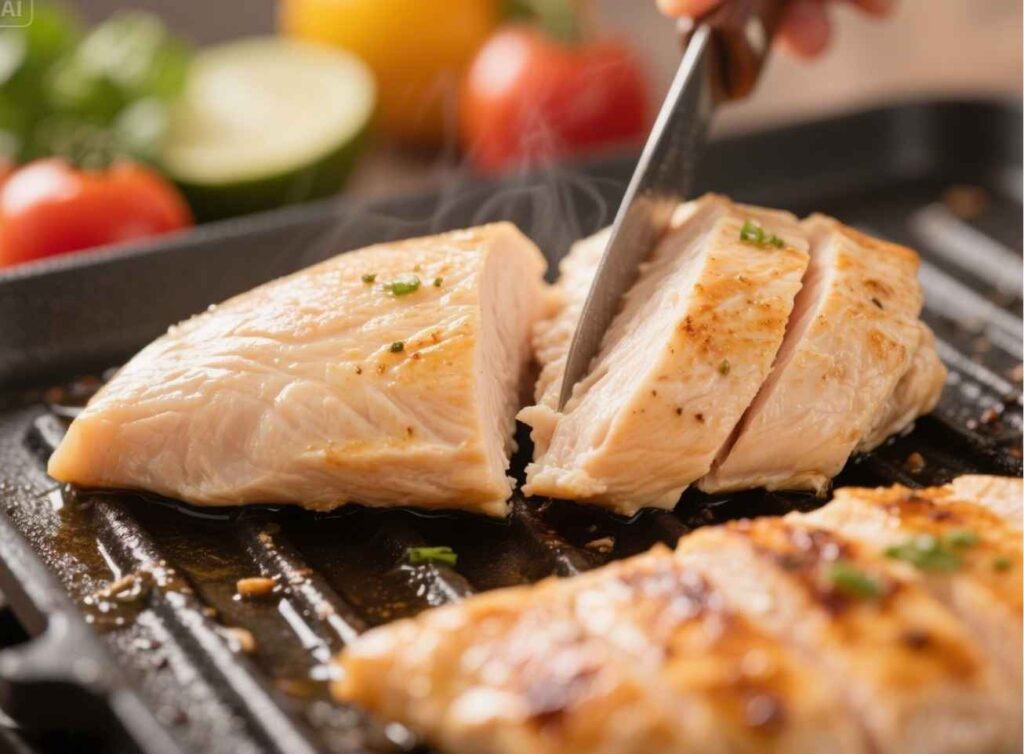
Stick to Skinless
Remove the skin before cooking to keep the fat content low.
Choose Lean Cooking Methods
Grill, bake, or poach chicken breast to keep calories in check.
Practice Portion Control
Stick to 4-6 oz servings to avoid over-consuming calories.
Pair with Nutrient-Dense Sides
Complete your meal with fiber-rich vegetables and whole grains for a well-rounded plate.
Plan Ahead
Cook chicken breasts in bulk and store portions for meal prep, ensuring you always have a healthy option.
Calories in Chicken Breast: How-To
Need help calculating meals based on calories? Use an app like MyFitnessPal to log your chicken breast portions and keep track of calories consumed throughout the day.
Final Thoughts: Building Healthy Habits
Chicken breast is a nutritional powerhouse that fits seamlessly into nearly any diet and lifestyle. Whether counting every calorie or just trying to eat cleaner, understanding the calorie count and nutritional value of 1 lb of chicken breast will empower you to make healthier decisions in the kitchen.
If you’re ready to make chicken a central player in your diet, experiment with recipes and meal plans tailored to your goals! By keeping your portions balanced and your cooking methods healthy, you can enjoy the benefits of chicken breast guilt-free.







